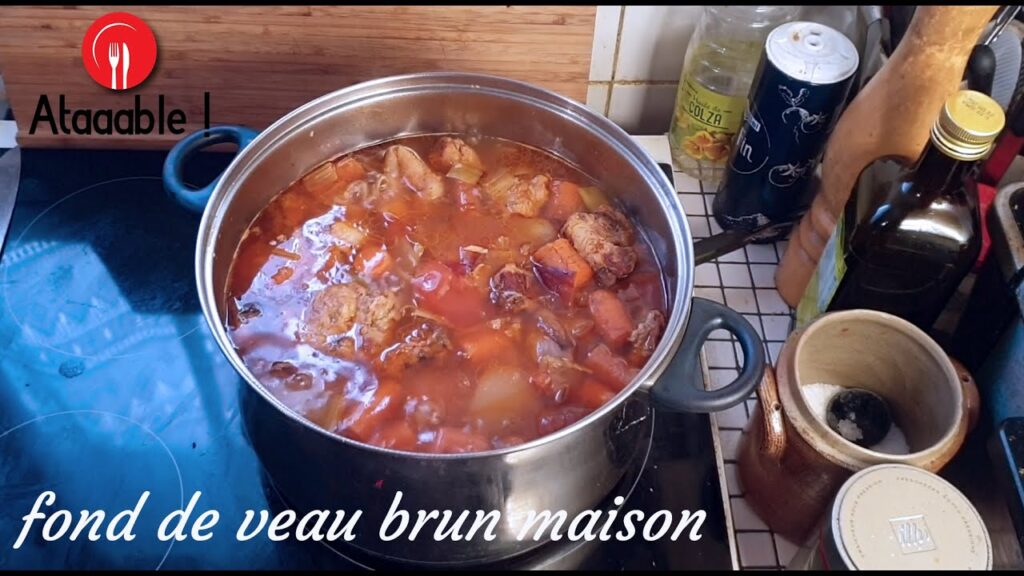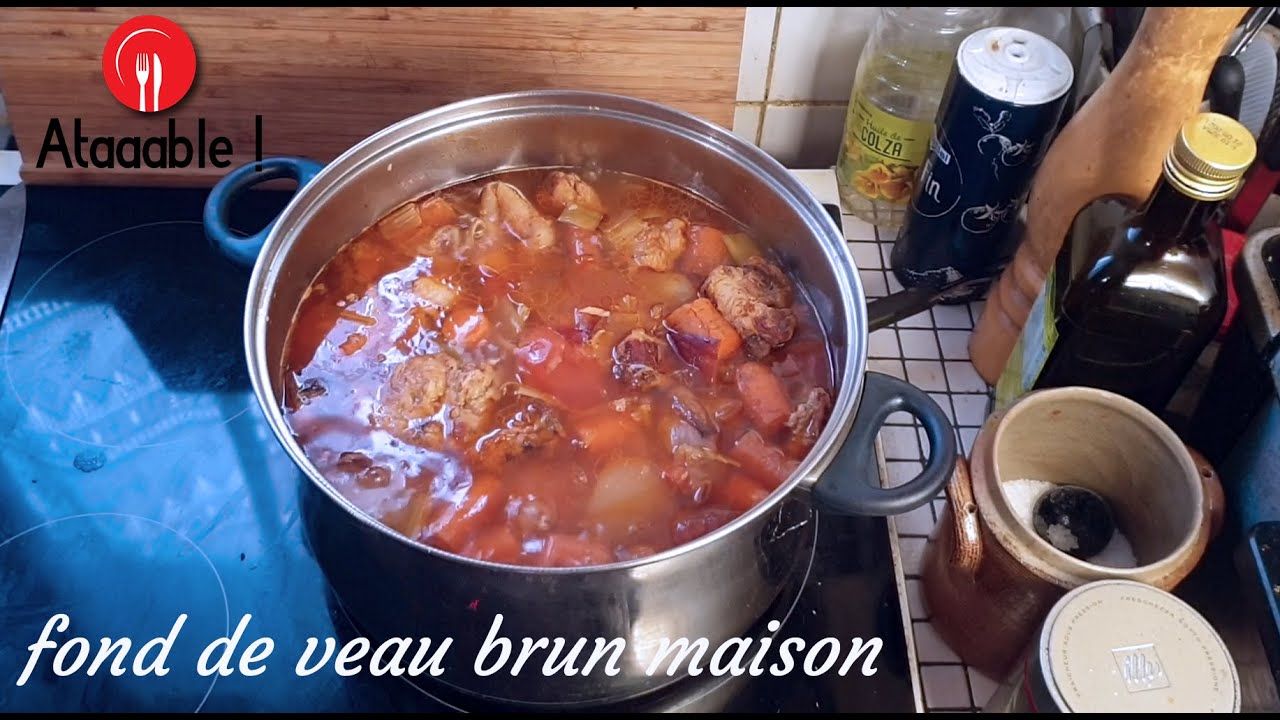
Unlocking Culinary Depths: A Comprehensive Guide to Fon de Veau
In the realm of culinary arts, certain ingredients stand as foundational pillars, supporting a vast array of dishes with their rich flavor and complexity. One such ingredient is fon de veau, a French term meaning “veal stock.” More than just a stock, fon de veau is a deeply concentrated, intensely flavorful brown stock made from roasted veal bones, vegetables, and aromatics. It’s a labor of love, requiring time and patience, but the resulting depth of flavor is unparalleled, elevating sauces, braises, and soups to extraordinary heights. This article delves into the intricacies of fon de veau, exploring its history, preparation, uses, and why it remains a cherished component of fine cuisine.
The History and Significance of Fon de Veau
The origins of fon de veau can be traced back to classical French cuisine, where the mastery of stocks and sauces was considered essential for any serious chef. In the 17th and 18th centuries, chefs like Marie-Antoine Carême and Auguste Escoffier codified and refined the art of sauce making, establishing fon de veau as a cornerstone of the French culinary repertoire. It wasn’t simply about creating a flavorful liquid; it was about extracting the essence of the ingredients and transforming them into something greater than the sum of their parts. The meticulous process of roasting the bones, simmering them for hours, and carefully skimming impurities was a testament to the chef’s dedication and skill. This dedication is still present today as chefs around the world continue to use fon de veau as a base for many dishes.
The Art of Making Fon de Veau: A Step-by-Step Guide
Creating authentic fon de veau is a multi-stage process that demands attention to detail. Here’s a breakdown of the key steps:
Selecting the Right Veal Bones
The foundation of any good fon de veau is high-quality veal bones. Knuckle bones, leg bones, and neck bones are all excellent choices, as they are rich in collagen, which contributes to the stock’s body and mouthfeel. Look for bones that are relatively fresh and have a good amount of meat still attached. Ask your butcher to cut the bones into smaller pieces (about 2-3 inches) to maximize surface area for roasting.
Roasting the Bones and Vegetables
Roasting is crucial for developing the deep, complex flavors that characterize fon de veau. Preheat your oven to 400°F (200°C). Toss the veal bones with a neutral oil, such as canola or grapeseed, and spread them in a single layer on a roasting pan. Add roughly chopped mirepoix (a mixture of onions, carrots, and celery) to the pan. Roast for 1-1.5 hours, or until the bones are deeply browned and the vegetables are caramelized. Turn the bones and vegetables occasionally to ensure even browning. Watch carefully to prevent burning, as this can impart a bitter flavor to the stock. [See also: Homemade Chicken Stock]
Deglazing the Roasting Pan
Once the bones and vegetables are roasted, remove the pan from the oven and transfer them to a large stockpot. Place the roasting pan on the stovetop over medium heat. Pour in a cup or two of dry red wine or water and scrape up any browned bits (fond) from the bottom of the pan with a wooden spoon. This process, called deglazing, captures the concentrated flavors that have accumulated during roasting and adds another layer of complexity to the fon de veau.
Simmering the Stock
Pour the deglazing liquid into the stockpot with the bones and vegetables. Add enough cold water to cover the ingredients by about 2-3 inches. Bring the mixture to a simmer over medium heat. Once simmering, reduce the heat to low and maintain a gentle simmer for at least 8-12 hours, or even longer. Skim off any foam or impurities that rise to the surface regularly. This step is essential for achieving a clear and flavorful stock. The longer the stock simmers, the more flavor and collagen will be extracted from the bones.
Adding Aromatics
During the last few hours of simmering, add aromatics to the stockpot. Classic additions include a bouquet garni (a bundle of fresh herbs such as thyme, parsley, and bay leaf), peppercorns, and garlic cloves. These aromatics infuse the stock with subtle nuances and enhance its overall flavor profile. Be careful not to add the aromatics too early, as their flavors can become overpowering during long simmering.
Straining and Reducing the Stock
After simmering for the desired amount of time, carefully strain the stock through a fine-mesh sieve lined with cheesecloth. Discard the bones, vegetables, and aromatics. Return the strained stock to the stockpot and bring it to a simmer over medium heat. Reduce the stock until it has reached the desired consistency and intensity of flavor. This can take several hours, so be patient and monitor the stock closely to prevent it from burning. The reduction process concentrates the flavors and creates a richer, more gelatinous texture. A well-made fon de veau should have a deep brown color and a glossy sheen.
Cooling and Storing the Fon de Veau
Once the fon de veau has been reduced to the desired consistency, remove it from the heat and allow it to cool completely. Once cooled, transfer the stock to airtight containers and store it in the refrigerator for up to 5 days, or in the freezer for up to 3 months. Properly stored fon de veau can be a valuable asset in the kitchen, ready to add depth and complexity to a wide range of dishes.
Culinary Applications of Fon de Veau
Fon de veau is a versatile ingredient that can be used in countless culinary applications. Its rich, savory flavor and gelatinous texture make it an ideal base for sauces, braises, soups, and stews. Here are some specific examples:
- Sauces: Fon de veau is the foundation of many classic French sauces, such as demi-glace, espagnole, and bordelaise. These sauces are often served with grilled meats, roasted vegetables, or pasta dishes.
- Braises: Adding fon de veau to braising liquids enhances the flavor and richness of the dish. It helps to tenderize tough cuts of meat and creates a luscious, flavorful sauce.
- Soups and Stews: Fon de veau can be used as a base for hearty soups and stews, adding depth and complexity to the broth. It pairs well with a variety of vegetables, meats, and grains.
- Risotto: Using fon de veau instead of water or chicken broth when making risotto adds a layer of richness and umami that elevates the dish to another level.
- Glazes: Reduced fon de veau can be brushed onto roasted meats or vegetables as a glaze, creating a glossy, flavorful finish.
Fon de Veau vs. Other Stocks: What’s the Difference?
While fon de veau is often referred to as veal stock, it’s important to understand the nuances that distinguish it from other types of stocks. The key differences lie in the ingredients, preparation methods, and resulting flavor profiles.
- Veal Stock: Veal stock is generally made with unroasted veal bones and simmered for a shorter period of time than fon de veau. It has a lighter color and a milder flavor.
- Chicken Stock: Chicken stock is made with chicken bones and often includes chicken meat. It has a distinct chicken flavor and is generally lighter in body than fon de veau.
- Beef Stock: Beef stock is made with beef bones and may include beef meat. It has a richer, more robust flavor than chicken stock, but is still generally less concentrated than fon de veau.
- Vegetable Stock: Vegetable stock is made with a variety of vegetables and herbs. It has a lighter, more delicate flavor and is often used as a vegetarian alternative to meat-based stocks.
Fon de veau stands apart from these other stocks due to its intense flavor, deep color, and gelatinous texture, all of which are the result of the roasting and long simmering process. This makes it a particularly valuable ingredient for chefs seeking to add depth and complexity to their dishes.
The Importance of Quality Ingredients and Technique
As with any culinary endeavor, the quality of the ingredients and the precision of the technique are paramount when making fon de veau. Using high-quality veal bones, fresh vegetables, and aromatic herbs will result in a superior stock. Similarly, carefully following the steps outlined above, from roasting the bones to skimming the impurities, is crucial for achieving the desired flavor and texture. While it may seem like a time-consuming process, the rewards of making your own fon de veau are well worth the effort. The depth of flavor and versatility of this culinary staple will undoubtedly elevate your cooking to new heights. [See also: Making the Perfect Demi-Glace]
Modern Interpretations and Innovations
While the traditional method of making fon de veau remains a cornerstone of classical cuisine, modern chefs are constantly exploring new interpretations and innovations. Some chefs are experimenting with different types of bones, such as lamb or pork, to create unique flavor profiles. Others are incorporating unconventional aromatics, such as smoked paprika or star anise, to add a contemporary twist to the classic stock. Additionally, techniques like pressure cooking are being explored to reduce the simmering time without compromising the flavor. Despite these innovations, the fundamental principles of roasting, simmering, and reducing remain essential for creating a truly exceptional fon de veau.
The Enduring Appeal of Fon de Veau
In a culinary landscape that is constantly evolving, fon de veau remains a timeless classic. Its rich, complex flavor, versatile applications, and the meticulous craftsmanship required to create it continue to captivate chefs and food enthusiasts alike. Whether used as the base for a decadent sauce, a flavorful braising liquid, or a hearty soup, fon de veau has the power to transform ordinary dishes into extraordinary culinary experiences. So, embrace the challenge, invest the time, and unlock the culinary depths that fon de veau has to offer. You might even consider buying a pre-made version of fon de veau if you are short on time. However, the taste will never be the same as homemade.

